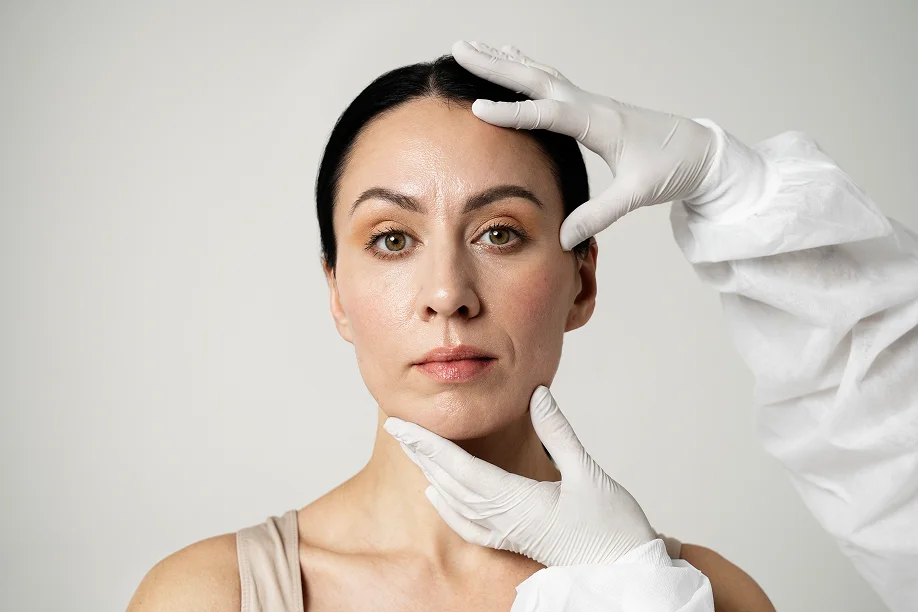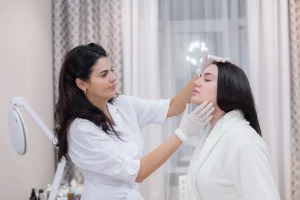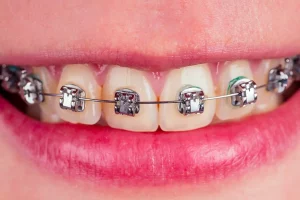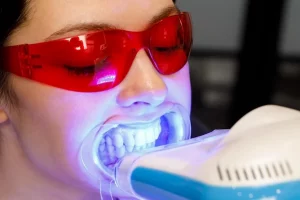Surgical facelifts tighten the loosened skin, reposition tissue, and deliver big changes. But they also involve downtime, scars, and real risk. A nonsurgical facelift isn’t a single treatment. It’s a curated approach. Think of it as a modular upgrade system for the face. You choose from injectables, energy-based devices, threads, or resurfacing tools, and, in some cases, all four.
The goal of a nonsurgical facelift isn’t transformation; it’s a correction that lifts the cheeks, softens nasolabial folds, and contours the jawline to improve the skin texture and reduce visible aging.
Not every patient needs a surgical lift because many don’t want it. That’s where nonsurgical facelifts come in. Please continue reading to learn about nonsurgical facelifts and whether they fit you.
What is a Nonsurgical Facelift?
It’s exactly what it sounds like—a facelift without the cutting.
These treatments rely on techniques that stimulate collagen, restore lost volume, and tighten skin. That could mean hyaluronic acid fillers, botulinum toxin, ultrasound energy (Ultherapy), radiofrequency, threads, or fractional lasers.
The procedures are outpatient. Most require only topical anesthesia or small local blocks. You walk in, get treated, and head out. Any swelling or redness is usually gone in a day or two.
And unlike traditional facelifts, which pull tissue into place, nonsurgical methods work by plumping, relaxing, or stimulating. The results are additive and cumulative, which means maintenance matters.
Who’s the Best Fit for a Nonsurgical Facelift?
Not everyone. But quite a few.
- If someone is in their 30s to early 60s with mild to moderate facial aging, they’re likely a good fit.
- If they’re not ready for surgery or don’t need it yet.
- Look for early jowling, mild skin sagging, loss of cheek volume, and fine to moderate wrinkles.
- Patients with excessive skin laxity or structural changes (like platysmal banding or deep marionette lines) won’t get the results they want here. They’ll need surgical correction or a hybrid approach.
Also, expectations matter more than age. A patient who wants a tighter jawline or brighter skin? Great. One who expects to look twenty years younger in a single sitting? That’s a problem.
What Does It Cost?
That depends on what’s being used and how much of it is.
A full nonsurgical facelift in Dubai typically ranges between AED 2,500 to AED 10,000 or more, depending on the combination of treatments and expertise.
Here’s a breakdown
- Fillers: AED 900 to AED 1,800 per syringe. You’ll often need two or more.
- Botox: AED 30 to AED 60 per unit. A full-face treatment may use 30 to 50 units.
- Ultherapy: AED 4,000 to AED 7,500 for a full face.
- Threads: AED 3,000 to AED 8,000, depending on thread type and areas covered.
- Laser or RF treatments: AED 500 to AED 2,500 per session.
Patients can stage treatments or combine them into one session. Either way, it’s still a fraction of surgical facelift pricing without downtime or risks.
Benefits of Nonsurgical Facelift
- The biggest advantage is that it’s nonsurgical. That means no cutting, no general anesthesia, and no long recovery. Most patients go back to work the same day.
- There’s also less risk. No bleeding, no infection, and no nerve damage, assuming the provider knows what they’re doing. The worst complications are typically bruising, swelling, or overcorrection—which are temporary and manageable.
- The results look natural. You’re enhancing structure, not pulling the skin tight. The face still moves, and the patient still looks like themselves.
- And patients can treat specific areas without touching others. Want cheek lift only? Done. Just the jawline? Also fine.
- The biggest benefit is it’s reversible. If something doesn’t look right, hyaluronidase can melt fillers. Botox wears off in a few months. Threads dissolve. There’s a comfort in knowing most changes aren’t permanent.
Options Available in Nonsurgical Facelift
Here are the most effective and in-demand options available in 2025,
- Fillers are the most common tool. They restore midface volume, lift nasolabial folds, and contour the chin and jaw. Hyaluronic acid is the default type. Calcium hydroxylapatite or PLLA may be used for structure.
- Botulinum toxin softens expression lines—forehead, glabella, crow’s feet. It can also lift the brow and reduce the downward pull of the platysma.
- Ultherapy and RF tightening use heat to stimulate collagen deep in the dermis. This works over weeks, not days, and is good for early sagging around the cheeks, jawline, and neck.
- PDO threads offer immediate lift with longer-term tightening. They’re ideal for patients who want a visible change without surgery. Proper placement and patient selection are critical.
- Microneedling with PRP, fractional lasers, and RF microneedling focuses more on skin quality than structure. These tools resurface, shrink pores, and improve tone and texture.
No one needs everything. The best outcomes come from strategic combinations. Consult your beauty therapist as they use each tool for what it does best.
Takeaway
Nonsurgical facelifts help us maintain our faces rather than causing complications and requiring a huge process to build a new face by surgical methods. Techniques matter the most in nonsurgical facelifts. So consult an experienced beauty therapist to get the best out of your treatment.
If you’re exploring options for facial rejuvenation and want professional guidance, consider scheduling a consultation with an expert in beauty therapy at Oris Dental Center.





